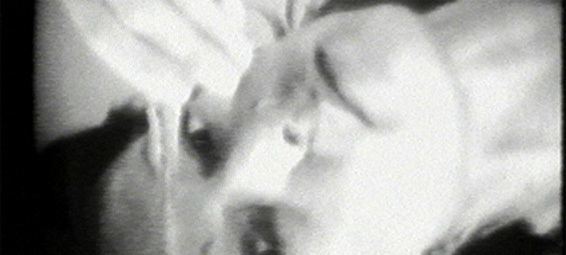“The Mirror and the Monitor” sets up a thought-provoking inter-generational dialogue between artists who were present at the creation of the first video art (Joan Jonas, Martha Rosler, Lynn Hershman) and those who came of age during the post-MTV, pre-YouTube era (Alex Bag and Kristin Lucas). By presenting a range of work on the notional genre of the female self-portrait we are invited to consider how such reliable interpretive concepts as the spectacle, the masquerade or the cyborg may have been transformed by changing conditions in the video public sphere.
The concept of the persona or performed identity is developed in two landmarks, Jonas’s Vertical Roll (1972) and Bag’s Untitled Fall ’95 (1995), both of which use the body-camera nexus as an expressive medium. Even as Jonas’s image is presented as a unified and coherent character (called Organic Honey) she is trapped within the monitor’s boundaries by the titular “roll” as the frames slip past, stuck out of sync. The roll of the image is accompanied by the sound of a metronomic beat that continues in endless cadence, seeming to trap her and us in a continuous closed-circuit hell. In contrast, Bag’s disjunctive, hilarious work, which dates from the era of channel-surfing and cable-TV proliferation, supplies us with an astonishingly varied lineup of impersonations, all circling around and questioning the basic integrity of the work of art and the artist’s own self.
Both Rosler’s Domination and the Everyday (1978) and Lucas’s Involuntary Reception (2000) depict the individual experience of daily life as embattled by broadcast signals of power. In Rosler’s factographic montage, the experience of child care at home is shown to be continuously embedded in many layers of the nominally “outside” world: the art world, the corporate world, the Cold War. For Lucas’s protagonist in Involuntary Reception, electronic surveillance is ongoing and everywhere; sometimes paranoia is perfectly justified. Following the historical arc sketched out here, it is easy to conclude that while the video medium has become steadily more ubiquitous, it remains as disconcerting as ever.
Image: Still from Joan Jonas’s Vertical Roll





